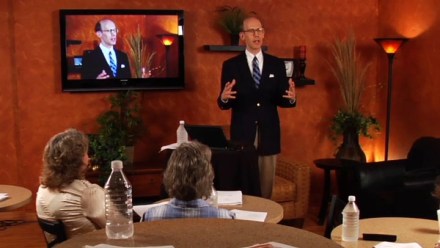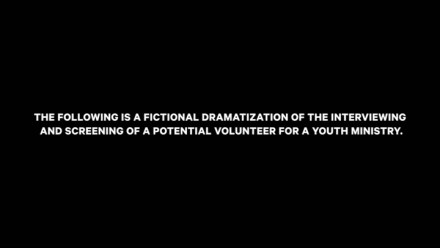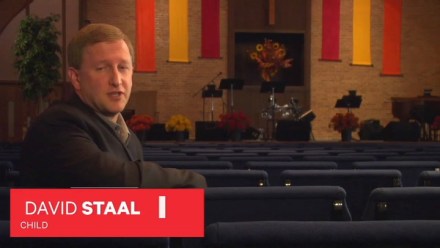Norwood Davis is the chief financial officer at 12Stone Church—a thriving multicampus congregation in the Atlanta area. In the article “A Usable Metric for Any Church,” Davis, along with other financial experts, shared insights about collecting and analyzing financial and demographic data. In this article, we asked Davis to share the best ways to use this data for effective reports that help with financial decisions.
12Stone is known as a church that uses dashboard and metrics effectively in financial reports. Why is that?
A few reasons. First, all the time we’re tweaking and adjusting our reports, adding new metrics or taking away metrics that are no longer relevant. We’re constantly trying to improve our reports and reporting.
Second, it’s a team effort. I’m designing a lot of our dashboards and oftentimes my name is on the report, but there are a lot of people involved in gathering, analyzing, reporting, and presenting the data. From time to time, we’ve also brought in outside consultants to help us think about what we could learn from our data and how we could best present it to different groups in the church.
Third, we’re always studying trends analysis and data reporting. We’re learning from other organizations. I serve on the boards of several nonchurch charitable organizations. I look at what data they’re reporting and how they’re reporting it. When I see something that would be helpful for 12Stone, I integrate it into our own metrics and reports.
What should be the key goals or purposes of financial reporting?
There are four purposes. First, reports inform decisions. Unfortunately, reports often become an administrative task—just something churches have always done so they continue to do them. But reports really need to help with decision-making.
Second, financial reports should measure progress. How is your church doing over time? What positive trends do you see?
Third, reports diagnose challenges. When studied over a period of time, metrics can be a significant indicator of where there may be a challenge. When you see a variance from a trend, you can ask questions and diagnose what’s happening.
Fourth, reports help churches celebrate achievement. We all need to capture moments we can celebrate. John Kotter, the author of Leading Change, talks about celebrating short-term wins. But the only way you can know your wins is to have appropriate metrics in place.
What are key characteristics of an effective report?
Accuracy and data integrity. It’s important to have good, accurate information that ties back to auditable processes and systems. For example, we measure giving per person and expense per person. If one of our campus youth ministries is careful about taking attendance on a Wednesday night and another is simply estimating attendance—”It looks like we have 50 this week”—we’re not going to have great comparisons. We have to capture and compare the same data throughout our campuses. In this case, we need accurate numbers for each youth ministry.
Another important aspect of an effective report is context. Don’t just report numbers, but report why the numbers are the way they are. Provide adequate context. As an example, our financial statements show that we generated a significant amount of cash from operations that is more than what we budgeted. We intentionally budgeted less so that we could use that additional revenue to build new campuses. People need to know why there is a difference in our budget compared to our actual cash flow.
How do metrics and dashboards—charts, graphs, and tables—add to a report’s effectiveness?
Think of them as features on a dashboard of a car. A fuel gauge shows us if we have enough gas to get from point A to point B. A lot of cars have navigation systems that give an estimated time of arrival, so we can measure our progress. We have warning lights that tell us there’s a problem.
Financial dashboards and metrics serve a similar purpose. They help us measure progress, provide warnings signs about problems ahead, help diagnose challenges, and give information for making decisions. Metrics help measure what kind of resources are there and how to allocate resources down the road.
What’s an easily avoidable mistake often made when creating reports?
Giving people information they can’t act on. There are different groups that need specific financial information. At 12Stone, these groups are the congregation, staff, leadership team, and governing board. There’s some overlap between what financial information each of these groups need, but generally, there’s different information for different audiences.
Do you have an example?
Going back to the car analogy, if my check engine light comes on, the only decision I have to make is whether or not I get the car serviced. The vehicle doesn’t give me the diagnostic code. It doesn’t tell me if my fuel pump is bad. It just gives me information I can act on, which is to get the vehicle serviced.
To illustrate how this applies to churches, every quarter I make a presentation to our board of directors that includes our debt-to-income ratio. In my church, only the board can make decisions related to debt. So, this board is the right place to discuss debt in detail. We don’t go to our leadership team with this information, with the exception of our senior pastor, who is on this governing board. The members of our leadership team—which is made up of our campus pastors and other ministry leaders—don’t see information about debt levels because there’s nothing they can do about it. They don’t make those decisions.
What about reports given to your congregation?
We report overall contributions to the congregation at an annual meeting. But we always highlight how those contributions fueled our mission, which is to reach the lost, serve the least, and raise up leaders. Financial information gets tied to our mission.
What clutters a report?
Sometimes you can have too many graphs, charts, and tables. It’s really about producing a report that has a good visual representation of what’s happening. Make sure you have enough dashboards to communicate the message that you’re trying to communicate—and to the correct audience. But don’t do so many dashboards that you obscure the underlying data.
What other mistakes do financial managers often make when giving out or presenting reports?
They use finance and accounting jargon unfamiliar to those who receive the report. Financial managers may just breeze through a report without explaining anything. Dashboards, metrics, and reports are about helping churches make better financial decisions. Financial managers need to teach people how to use a report. When we hire new staff members or when current employees get a promotion, we’ll sit down with them and walk them through their financial reports. My church also holds an annual financial luncheon for our staff. It’s not mandatory, but it is an opportunity for them to learn about our financial processes.
What hidden agendas are sometimes tucked inside financial reports?
Some church leaders may use reports to try to generate more revenue or reduce expenses. They use the report to get something or to prove a point.
But I would think reports sometimes need to say, “Wake up! We have a problem here.”
If you have a track record of reporting consistently, transparently, and in a disciplined way, you will be listened to when a problem arises.
How often do you send out reports?
A weekly dashboard with information from the weekend service goes to our management team. Our board is copied on that. Monthly, budget reports—without charts and graphs—go to all of the budget owners as well as our senior leadership team, and a consolidated overall report goes to the board that includes a cover letter with bullet points that explain what’s happening and why. We present the annual report I mentioned to the congregation.
When you send the monthly budget report to, say, the youth pastor, do you only send information related to the youth ministry?
Yes. Our youth pastor is not responsible for revenue. So he would get an expense report. If ministry leaders have multiple departments under them, those different departments would be broken out on the monthly budget report.
Are there tools that can help financial managers generate good reports?
There are some free online tools, such as CapinCrouse’s Church Financial Health Index and the one at ChurchMetrics.com. You can produce reports with Microsoft Excel. For a small amount of money, your church can subscribe as a nonprofit to Microsoft’s Office 365. There are also tools that will cost you quite a bit, like Domo and Tableau. Most churches don’t need to spend a lot. My recommendation is to use a reporting tool that’s free. When that tool no longer meets your needs, explore other options.
(Editor’s Note: The Church Financial Health Index is free to CapinCrouse clients only. Nonclients may purchase an annual subscription to the Index.)
How has effective financial reporting helped your church?
Financial reporting is one of a whole series of leadership tools that have helped us grow. It’s not the sole reason for the growth we’ve experienced, probably not even the primary reason, but it’s certainly been part of the equation that’s helped inform the decisions we’ve made. Financial reporting has been very important in helping us fulfill the mission and the vision that we believe God has given us.
Related Articles:



















